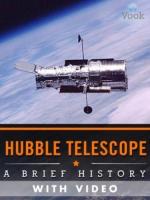|
This section contains 2,570 words (approx. 9 pages at 300 words per page) |

|
The National Aeronautics and Space Administration's Hubble Space Telescope (HST) is the first major infrared-optical-ultraviolet telescope to be placed into orbit around Earth. The telescope is named after American astronomer Edwin P. Hubble, who found galaxies beyond the Milky Way in the 1920s, and discovered that the universe is uniformly expanding.
Located high above Earth's obscuring atmosphere, at an altitude of 580 kilometers (360 miles), the HST has provided the clearest views of the universe yet obtained in optical astronomy. Hubble's crystal-clear vision has fostered a revolution in optical astronomy. It has revealed a whole new level of detail and complexity in a variety of celestial phenomena, from nearby stars to galaxies near the limits of the observable universe. This has provided key insights into the structure and evolution of the universe across a broad scale. Its location outside of Earth's atmosphere has also...
|
This section contains 2,570 words (approx. 9 pages at 300 words per page) |

|


